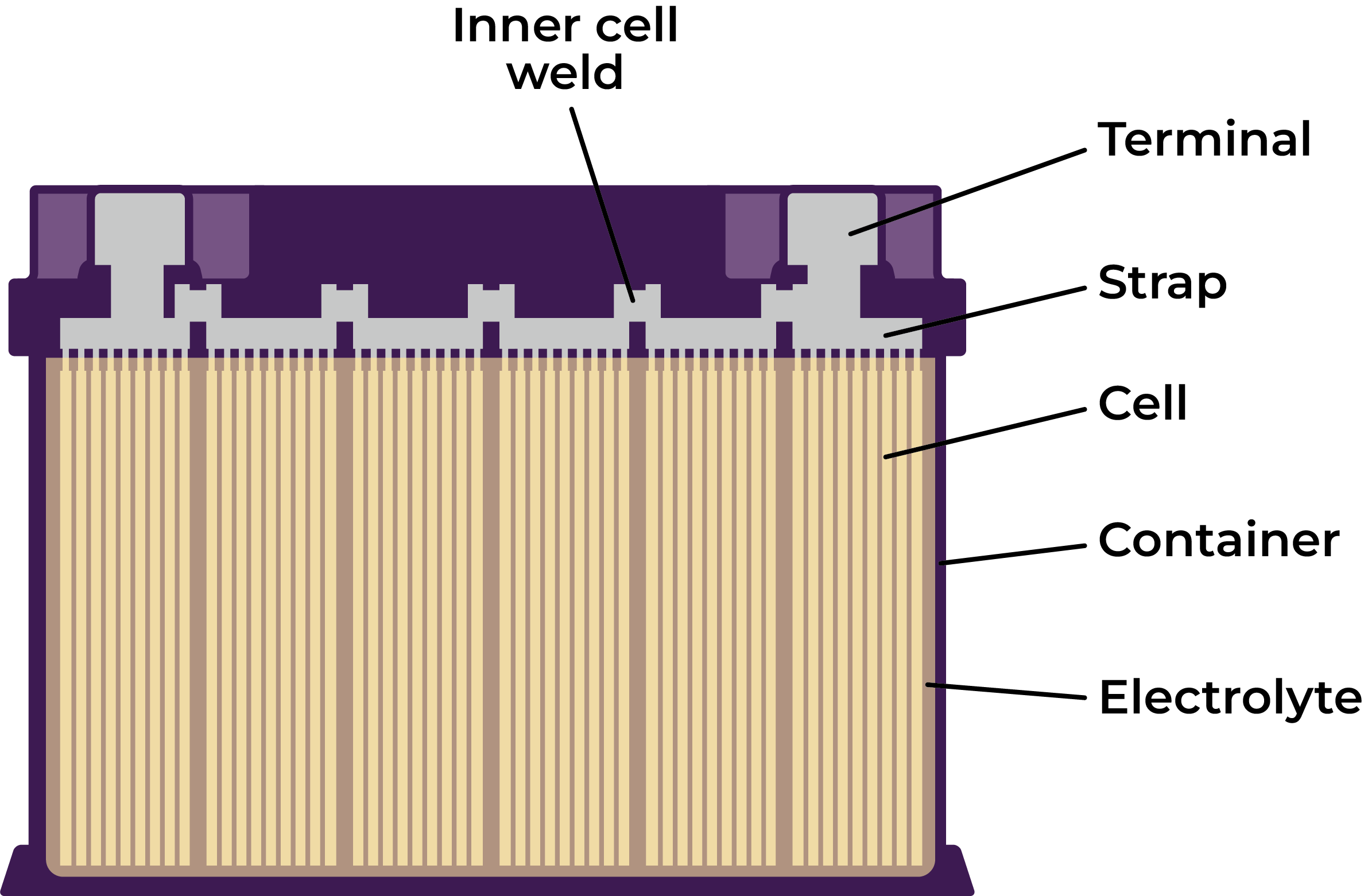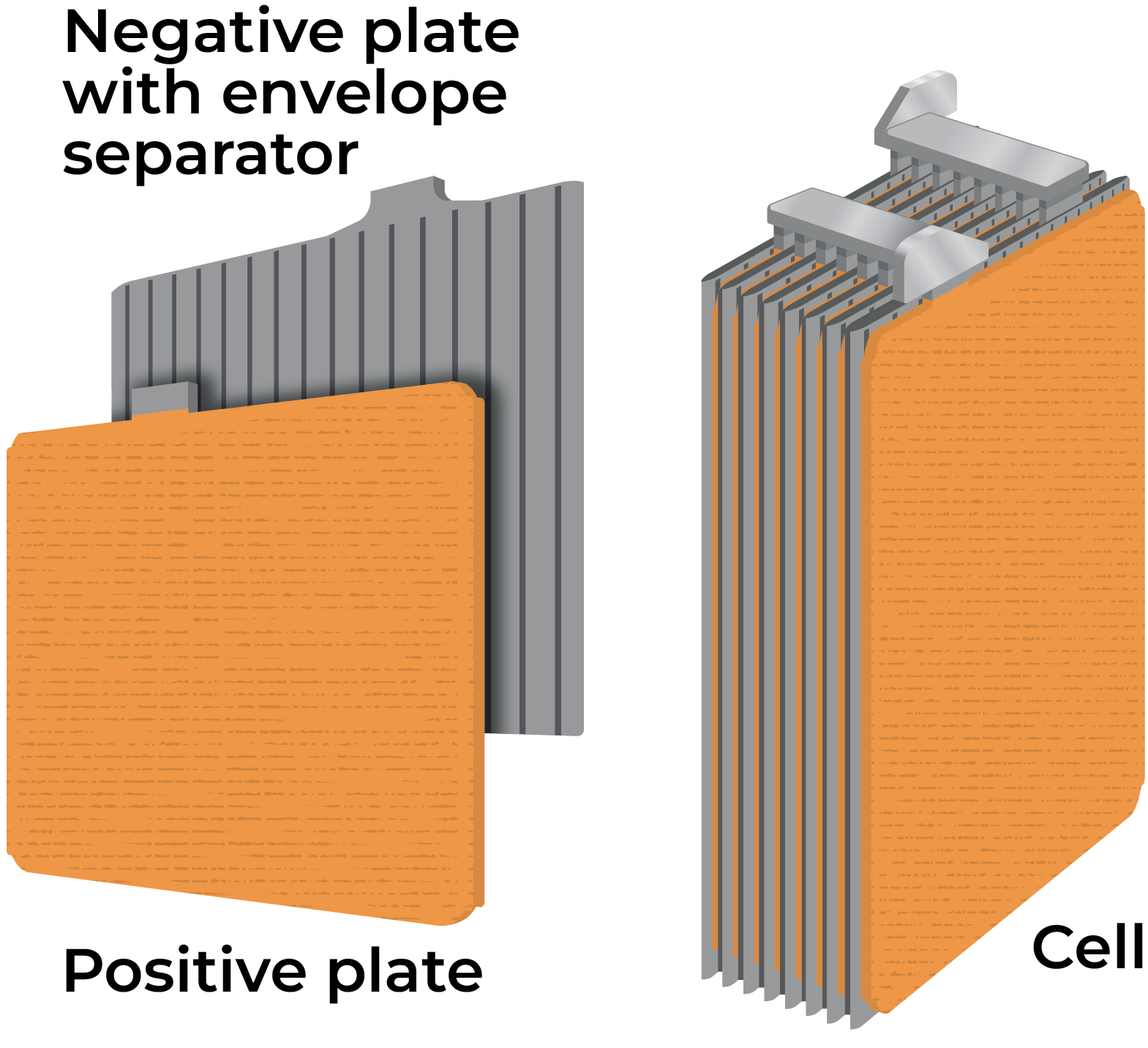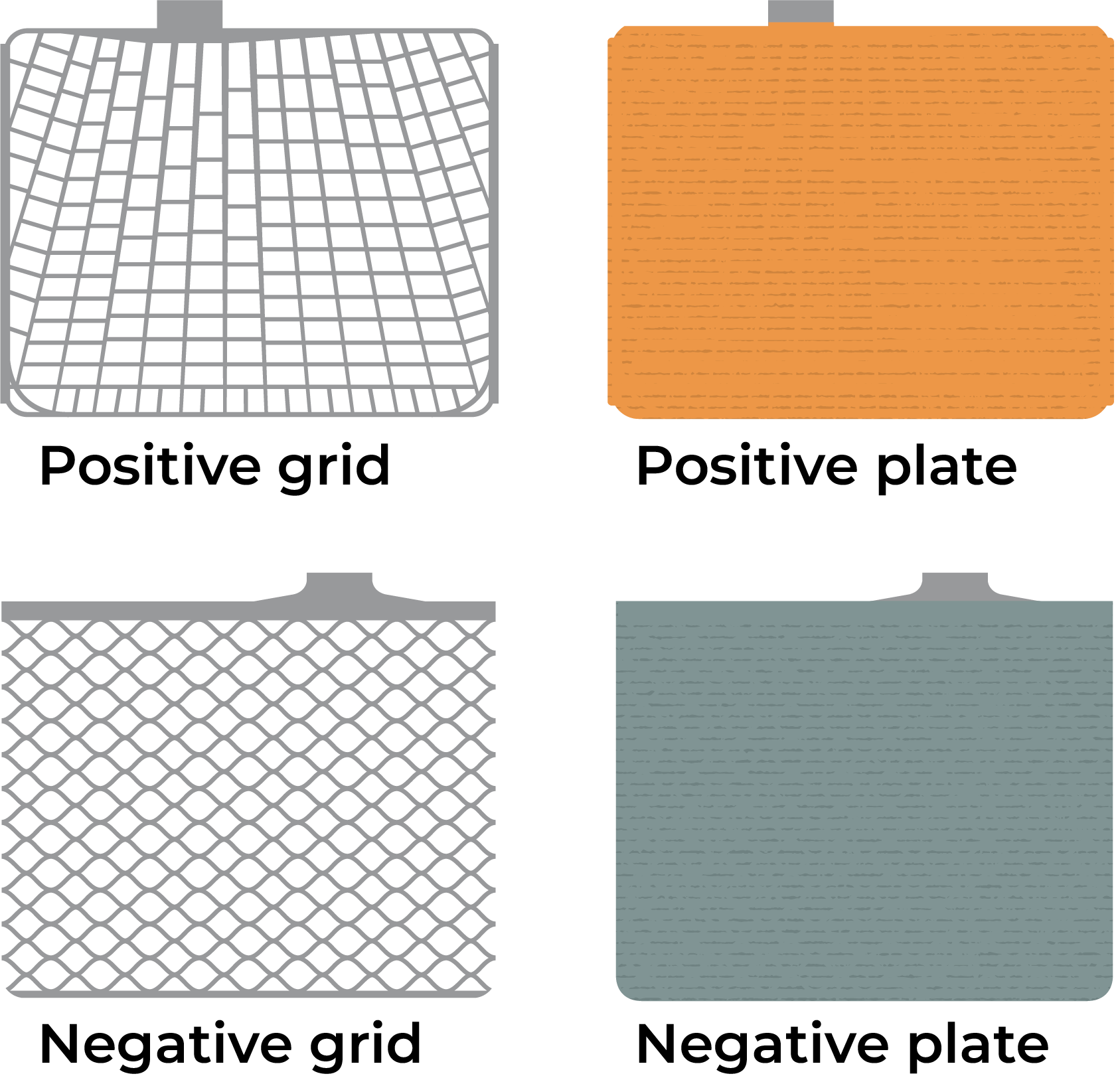What Is a Car Battery?
A car battery stores and delivers electrical energy to start your engine and power accessories. It converts chemical energy into electricity using a lead-acid reaction.
Key Components Inside
- Positive & Negative Plates: Thin lead sheets that react with acid to create electrical flow.
- Electrolyte: A mix of sulfuric acid and water that generates electricity.
- Separators: Keep plates from touching while allowing energy flow.
- Battery Cells: Each produces ~2.1 volts. A 12V battery has six.
- Connectors & Grids: Carry current through the battery.
- Terminals: Connection points where power flows to your car.

Plates & Grids

Separator & Electrolyte

Terminals & Cell Layout
How It Works
- Chemical Reaction: Electrolyte reacts with plates to generate electricity.
- Power Flow: Current flows to the starter and electrical systems.
- Recharge: The alternator recharges the battery while driving.
Quick Facts
- Most car batteries use lead-acid technology.
- Typical battery lifespan is 3–5 years.
- High heat, deep discharges, and corrosion reduce lifespan.
Clarios creates the most advanced battery technologies for virtually every type of vehicle. We are a global leader in energy storage solutions, powering one in three of the world’s vehicles. We partner with our customers to develop smarter solutions that make people’s lives better.

